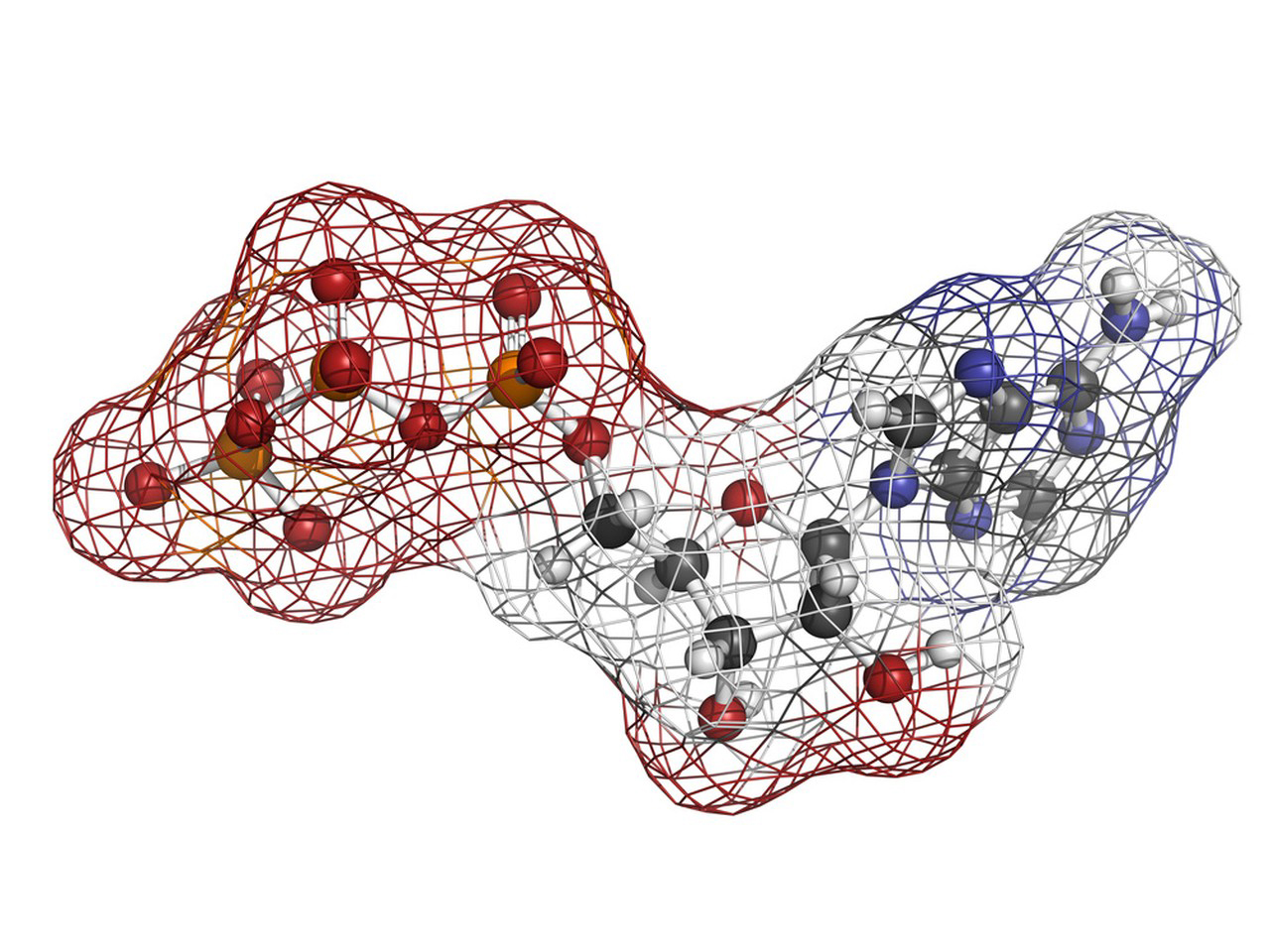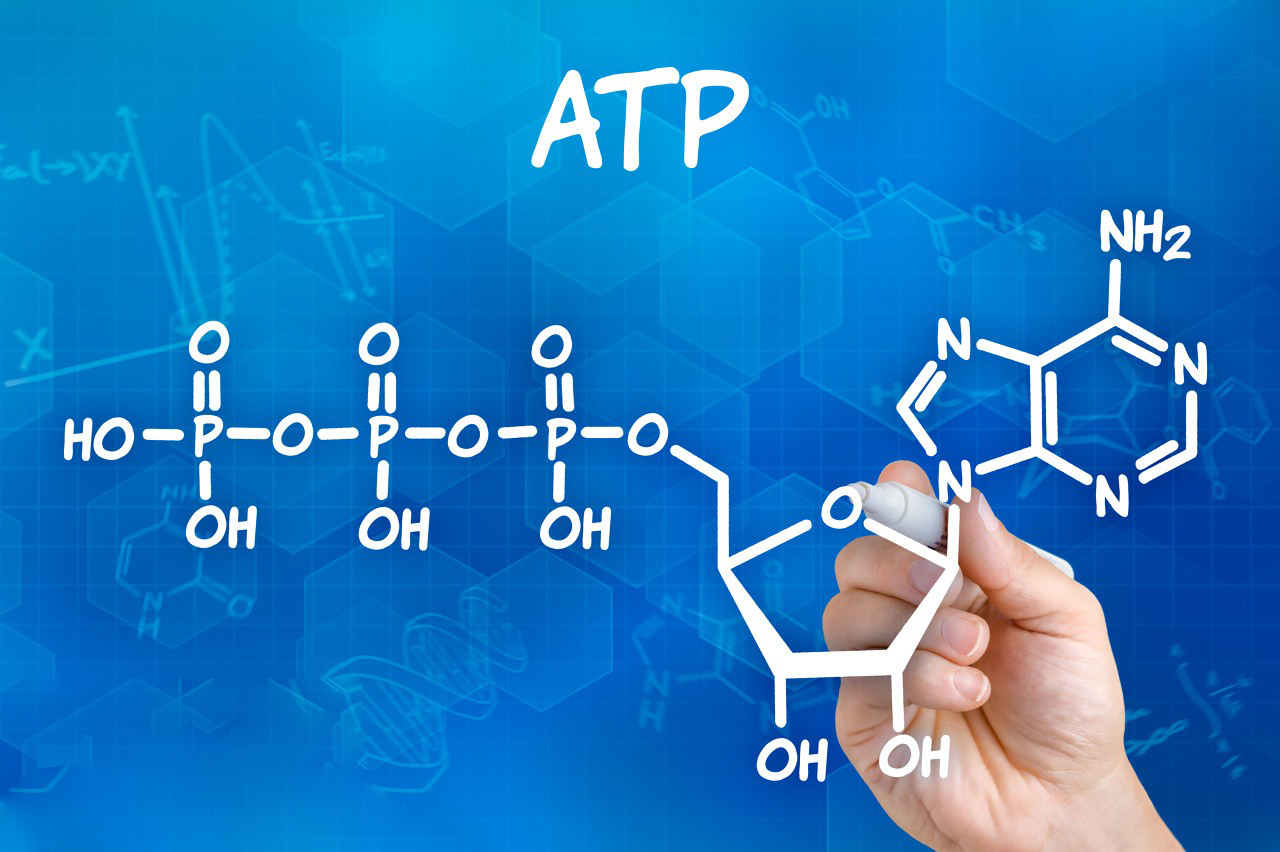Adenosine triphosphate (ATP) is a vital molecule that serves as the primary energy currency of cells in living organisms. It plays a crucial role in various cellular processes, ranging from metabolism and energy transfer to cell signaling and molecular synthesis. Let’s conduct a comprehensive study of ATP, covering its structure, function, synthesis, and significance in living organisms.

Chemical Structure:
Adenosine triphosphate is a nucleotide composed of three main components:
- Adenine: A nitrogenous base, one of the four bases found in DNA and RNA.
- Ribose: A five-carbon sugar.
- Three phosphate groups: They are attached to the ribose sugar, forming the characteristic triphosphate tail of ATP.
The chemical formula of ATP is C10H16N5O13P3.
Function:
Adenosine triphosphate is primarily known for its role as a high-energy molecule that stores and transfers energy within cells. It acts as an intermediary between energy-releasing and energy-consuming cellular processes. When ATP is broken down into adenosine diphosphate (ADP) and inorganic phosphate (Pi), energy is released, and this energy is utilized to drive various cellular activities.
Energy Transfer and Cellular Work:
Adenosine triphosphate functions as an energy carrier in the cell. When energy is required for cellular work, ATP donates one of its phosphate groups through hydrolysis, producing ADP and Pi. This process releases energy that is used to perform various tasks, such as muscle contraction, active transport of ions, synthesis of macromolecules, and other energy-demanding processes.
The reaction for ATP hydrolysis is:
ATP + H2O -> ADP + Pi + energy

ATP Synthesis:
The synthesis of ATP occurs mainly through two processes:
- Cellular Respiration: In aerobic respiration, ATP is produced in the mitochondria through the processes of glycolysis, the citric acid cycle (Krebs cycle), and oxidative phosphorylation.
- Photosynthesis: In plants and some microorganisms, ATP is generated during the light-dependent reactions of photosynthesis.
Significance in Living Organisms:
Adenosine triphosphate is essential for the survival and functioning of all living organisms. It acts as a universal energy carrier and powers various cellular processes. Some key roles of ATP include:
- Providing energy for the synthesis of macromolecules like proteins, lipids, and nucleic acids.
- Enabling active transport of ions and molecules across cell membranes.
- Facilitating muscle contraction and movement in animals.
- Fueling chemical reactions that require energy in metabolism.
- Powering cell division and other processes related to cell growth and repair.
Regulation:
The concentration of ATP in the cell is tightly regulated through feedback mechanisms. When the cell needs energy, ATP is hydrolyzed to release it. Conversely, when energy levels are sufficient, ATP synthesis is promoted, mainly through the control of enzymes involved in its production.
In summary, Adenosine Triphosphate (ATP) is a fundamental molecule in biology, serving as the primary carrier of energy in cells. Its crucial role in energy transfer and utilization makes it indispensable for various cellular processes, making ATP a cornerstone of life as we know it.
